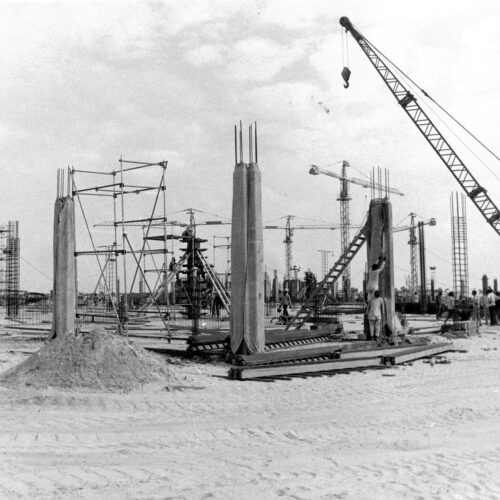Forty-five years ago this month, work began on Dubai’s World Trade Centre. Even before final decisions had been made on what it would look like, the tower’s location was secured with reinforced-concrete piling.
Today, the World Trade Centre is a go-to favorite for any architect forced to name their favorite building in the UAE. That’s often because its design is interpreted as exhibiting restraint. Its rise from 25 m below ground to 150 m above coincided with a plummeting real estate market. Today’s propriety is yesterday’s indulgence.
The creators of the World Trade Centre tower projected an air of confidence and ease. Really, though, there were grave doubts and fears.
In May 1975, the first piles were driven into land ruled by mosquitoes. One needed to dig less than a meter below ground to make contact with a viscous
